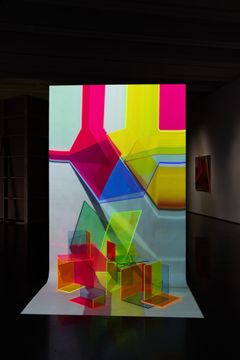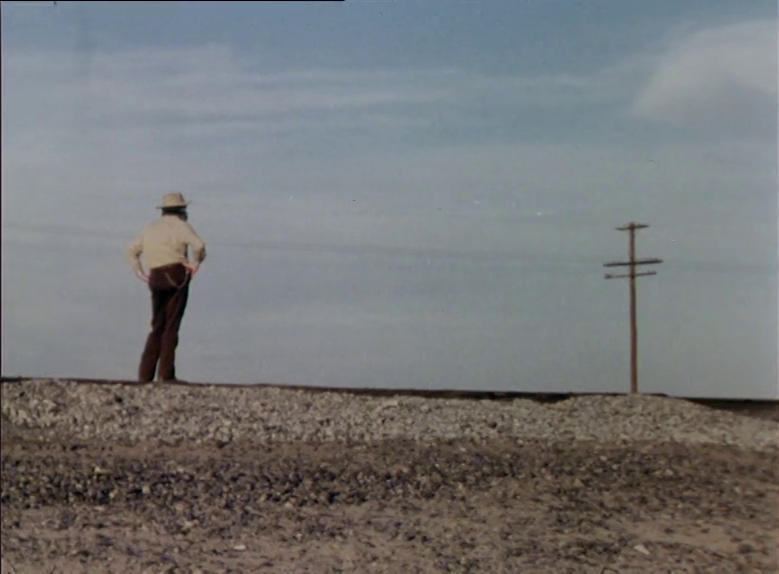One part railroad trestle, one part Sol LeWitt sculpture, the Taylor Yard Bikeway/Pedestrian Bridge traverses the Los Angeles River with a minimalist gesture: An 18-foot-wide pathway seems to float inside a structural grid. The 400-foot-long, traffic-cone-orange steel-frame structure is part of a larger revitalization of the 51-mile river, which once was seen as nothing more than a concrete drainage channel. But in the past decade, Angelenos have found a new love of the waterway—especially its soft-bottomed stretches, which are dotted with islands of tall grasses and scruffy trees and edged with the Los Angeles River Trail, a popular greenway and bike path connecting Downtown L.A. to Griffith Park.
ADUs will not solve L.A.’s housing crisis. Last February, the Los Angeles Homeless Services Authority gathered staff and volunteers for the 2022 Greater Los Angeles Point-in-Time Homeless Count, its first since the start of the pandemic. When the count was last conducted in 2020, close to 67,000 people were reported unhoused in Los Angeles County, a place where the median single-family home price is just over $800,000. Both the number of people who live in tents, in cars, and on the street and the cost of buying a home continue to rise more than 10 percent annually. These figures should leave us aghast and angry, but in California these yearly escalations have a numbing effect, even as the underlying precarity remains real and insistent.
Nearly every article about the demolition of the old Sixth Street Viaduct in 2016 mentions Terminator 2: Judgment Day. In Los Angeles, where every location is scenery, the iconic, double-arched span played backdrop to the Skynet apocalypse. Architect Michael Maltzan, designer along with engineering firm HNTB, of the new expressive, ribbon-like Sixth Street Viaduct, has a rosier vision—one of equity and accessibility. L.A. infrastructure, however, is linked to unjust acts of clearance and partition, localized catastrophes not always captured by Hollywood. Can a new bridge rewrite the narrative?

Since the 1970s, Barbara Kasten (born 1936) has developed her expansive photographic practice through the lens of sculpture, painting, theater, textile and installation. Well known within photographic and contemporary art discourse, the Chicago-based artist has recently begun to be reconsidered within the broader context of architectural theory. This survey contextualizes Kasten’s investigations into how moving images and light play within and through architectural forms.

Two pioneering works of radical television from the mind of the iconoclastic architecture critic Reyner Banham.
The writings and thinking of Reyner Banham, born 100 years ago this year, came to define and create architectural culture. His hugely innovative and engaging analyses of architecture, the city, culture and its artefacts continue to mark generations.
Banham’s trademark formal and intellectual wit, invention and creative critique found a perfect home on TV. In tonight’s first episode he drives the streets of his beloved LA, aided by an Alexa-like technological tour guide. In the second, he departs from there for Las Vegas, finding his own personal jackpot in the desert landscapes on route.
The ScreenTalk is chaired by Professor Richard J Williams, author of Reyner Banham Revisited, with guests writer and journalist Owen Hatherley, architectural historian Adrian Forty and LA-based critic, editor and curator Mimi Zeiger.
In early March, just as case numbers and mask requirements were dropping, the New York Times editorial board published an opinion piece titled “Why New York Needs a Covid Memorial.” City and citizens, the op-ed argued, would be stronger if it could “confront its grief instead of trying to outrun it.” The authors were necessarily hazy about shape and size, style and site, but particular about the need for a place for people to gather and mourn.
In year three of the pandemic, the United States is just shy of a million COVID-related deaths. Global deaths are six times that number, with each data point representing an individual with a constellation of loved ones, friends, co-workers left behind. Clearly, there’s a need to honor the dead. But when and how? Read More …
We generally want to interpret contemporary art museums in good faith—not as mausoleums of wealth, but as open, accessible places, removed from the vicissitude of the market and designed to produce an experience, foster education, and nurture communion with art. The recently reopened Museum of Contemporary Art San Diego (MCASD) in La Jolla checks all those boxes, even adding a gentle Pacific breeze and the sound of crashing breakers. Yet the $105 million renovation and expansion gives off monied vibes, accommodating a mushrooming collection and driven by the ambitions of the museum board.
Low-slung on a bluff overlooking the Pacific Ocean and conservatively clad in travertine panels, the expanded Joan and Irwin Jacobs Building, by New York-based Selldorf Architects, greets visitors with a pavilion-like entry shaded by a massive Mission fig tree. Maybe it’s the glass and aluminum storefront facade, or the gift shop positioned to the right of the ticketing desk, but the details smack of high-end retail. The vibe: minimalist, tasteful, functional. In short, everything that Venturi Scott Brown and Associates’ (VSBA) weird, whimsically vaulted Postmodernist lobby is not.
This event is co-organized by Gavin Kroeber & Mimi Zeiger and presented in partnership with SCI-Arc.
The discussion will feature a remarkable group of architects, designers, and planners, including Keller Easterling, Patty Heyda, James Rojas, M. Casey Rehm, and Andrew Zago, along with artists Mary Ellen Carroll and Tim Portlock, journalist Gustavo Arellano.

Peter Reyner Banham is one of the most relevant architectural and design critics of the 20th century. Join us to celebrate his 100th birthday on March 4 with a symposium, organised as a collaboration between the AA and The Bartlett School of Architecture, UCL, which will bring together multi-generational duets of scholars and practitioners engaging on themes key to the life and intellectual legacy of the English critic.
The symposium will precede two AA Visiting Schools held from June-July 2022 – “Farewell Reveries” (online) and “A Blighty Safari” (a road trip throughout the UK) – that will reflect on Banham’s passion for travel and field exploration.
Original image by Tim Street-Porter
Waste Tide would be a poolside summer read if that pool were toxic swill of first-world effluence. CHEN QUIFAN’s science fiction novel was first published in China in 2013 and he’s currently futurist-in-residence at SCI-Arc. Set amid the e-waste trash heaps of Silicon Isle, a fictional polluted strip of land in a dying sea off the coast of China, the story evokes a future ravaged by climate change choking on obsolete consumer electronics. Modeled in part on the very real town of Guiyu, it’s an uncomfortably recognizable portrait of the Capitalocene and reflection of near-feudal class disparities. In this way, it resonates with novelist and socialist political activist China Miéville’s musings on utopia: “[W]e live in utopia; it just isn’t ours. So we live in apocalypse too.” The twin condition that someone else’s utopia is another’s dystopia is central to Waste Tide’s narrative, but not a foregone conclusion. From the piles of stripped circuity and heavy metal poisons of the dump emerges a worker revolution.
Waste Tide by Chen Quifan and translated by Ken Liu. Tor Books, 2019.